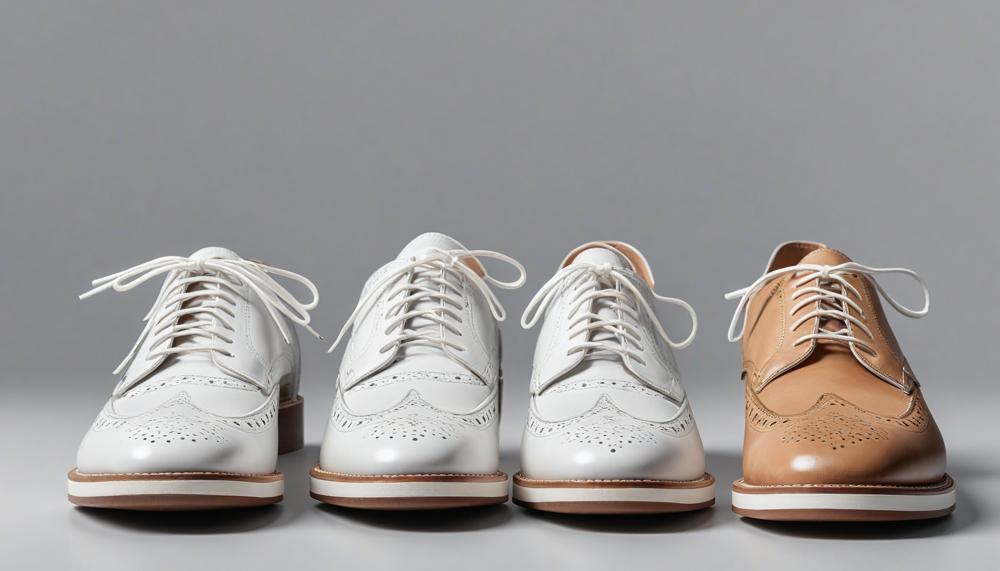No, European shoe sizes are not inherently smaller than US sizes. They simply follow a different sizing system. The key difference lies in the numerical value and measurement units. European sizes typically appear larger because they use a higher number system, often leaving shoppers confused when converting between the two.
When it comes to shoe shopping, understanding this difference can save you a lot of hassle. Here’s what you need to know:
- Sizing Systems: European shoe sizes use a different numerical scale than US sizes. For instance, a US men’s size 9 roughly translates to a European size 42.
- Measurement Units: US sizes are based on inches, while European sizes use centimeters.
- Brand Variations: Each brand might have slight variations, so checking the brand’s specific size chart is always a good idea.
- Foot Width: US brands often offer more width options than European brands.
- Children’s Sizes: US children’s shoes are more commonly available in half sizes compared to European brands.
Understanding these key points can make your international shoe shopping experience much smoother. Stay tuned as we dive deeper into each aspect to help you find the perfect fit across the globe.
EU to US Shoe Conversion 101
Contents
Converting EU shoe sizes to US sizes can be straightforward if you follow these guidelines:
- For Men: Subtract 33 from the EU size to get the US size. For example, an EU size 42 would be a US size 9 for men.
- For Women: Subtract 30 from the EU size to get the US size. For example, an EU size 40 would be a US size 10 for women.
- For a More Precise Conversion (Women): Subtract 31 from the EU size, divide by 1.27, and then subtract This method ensures a more exact fit.
Here’s a quick reference table for common sizes:
| EU Size | US Size (Men) | US Size (Women) |
| 36 | 3 | 6 |
| 37 | 4 | 7 |
| 38 | 5 | 8 |
| 39 | 6 | 9 |
| 40 | 7 | 10 |
| 41 | 8 | 11 |
| 42 | 9 | 12 |
| 43 | 10 | 13 |
| 44 | 11 | 14 |
| 45 | 12 | 15 |
What Are the Differences Between EU and US Shoe Sizes?
The main differences between EU and US shoe sizes lie in their measurement systems. In the US, shoe sizes are based on barleycorns, which are units of approximately 1/3 inch. EU shoe sizes, however, are measured in Paris points, equivalent to 2/3 of a centimeter. These differing units result in a notable difference in sizing and conversions.
Here’s a detailed comparison between EU and US shoe sizes for both men and women:
| EU Shoe Size | US Men’s Shoe Size | US Women’s Shoe Size |
| 39 | 6 | 8 |
| 40 | 7 | 9 |
| 41 | 8 | 10 |
| 42 | 9 | 11 |
| 43 | 10 | 12 |
| 44 | 11 | 13 |
| 45 | 12 | 14 |
| 46 | 13 | 15 |
Key Differences:
- Measurement Units: US sizes use barleycorns (1/3 inch), while EU sizes use Paris points (2/3 cm).
- Foot Width: EU sizes often consider foot width more explicitly, offering different width fittings.
- Conversion: A rough rule to convert EU sizes to US sizes is to subtract 31 from the EU size for men and 30.5 for women. For instance, an EU size 42 typically converts to a US men’s size 9 and a US women’s size 11.
For precise fitting, it’s advisable to refer to brand-specific size charts, as variations can occur.
Common Mistakes to Avoid with EU/US Shoe Sizes
When converting between EU and US shoe sizes, it’s easy to stumble into a few common pitfalls.
These mistakes can lead to purchasing ill-fitting shoes, which no one enjoys. Here are the main errors people often make:
- Confusion Over Size Numbers: EU sizes are generally higher than US sizes, leading to confusion. For instance, a US men’s size 9 roughly corresponds to an EU size 42, not a simple addition of 31.
- Inaccurate Approximation: Simply adding 31 to the US size for a rough EU size can result in errors. EU sizing is not a direct linear progression from US sizes and varies by brand.
- Assuming Uniformity Across Brands: Not all European brands adhere to the same sizing standards. A size 42 in one brand may differ slightly from a size 42 in another. Always check the specific brand’s size chart.
- Ignoring Width Differences: EU sizes don’t always account for width variations as US sizes do. This can lead to a poor fit if the shoe is too narrow or too wide.
- Believing in Size Myths: There’s a common belief that European shoes run smaller than US shoes. In reality, they can be slightly larger. This misconception can cause confusion when selecting the right size.
- Children’s Sizes: Converting children’s shoe sizes can be tricky since EU sizes often don’t have half sizes, making it harder to find an exact match.
Converting Children’s Shoe Sizes
To accurately convert children’s shoe sizes between European and US sizing systems, use a reliable conversion chart and measure your child’s foot precisely. Here’s a quick guide:
- Measure Foot Length: Measure your child’s foot from heel to toe in centimetres.
- Refer to a Conversion Chart: Use a detailed conversion chart to find the corresponding sizes in both US and European systems.
Here’s a handy conversion table:
| Foot Length (cm) | US Size | EU Size |
| 11.4 | 4 | 19 |
| 12.1 | 5 | 20 |
| 13 | 6 | 22 |
| 13.7 | 7 | 23 |
| 14.6 | 8 | 24 |
| 15.2 | 9 | 25 |
| 16.2 | 10 | 27 |
| 17.1 | 11 | 28 |
| 17.8 | 12 | 30 |
| 18.4 | 13 | 31 |
| 19.4 | 1 | 32 |
| 20.6 | 2 | 33 |
What To Do If You Buy the Wrong Shoe Size
When you discover you’ve purchased the wrong shoe size, especially considering European sizes are typically smaller than US sizes, follow these steps:
Understand the Size Difference
Familiarize yourself with the differences between US and EU sizing systems. European sizes are generally higher numbers than US sizes.
Convert Shoe Sizes
Use the conversion formula:
- For US men’s sizes, add 31 to your US size to find the EU size.
- For US women’s sizes, add 32.5 to your US size.
Example:

| US Size (Men’s) | US Size (Women’s) | EU Size |
| 8 | 9 | 39 |
| 9 | 10 | 40 |
| 10 | 11 | 41 |
Check Brand-Specific Size Charts
Different brands may have slight variations in their sizing. Always consult the specific brand’s size chart for accurate fitting.
Return or Exchange the Shoes
If the shoes don’t fit, contact the retailer to inquire about their return or exchange policy. Most stores allow returns or exchanges within a certain timeframe, provided the shoes are in new condition.
Try on Shoes When Possible
Whenever possible, try on shoes in-store before purchasing. If buying online, order from retailers that offer free returns or exchanges to mitigate the risk of size issues.
Consider Foot Width
European brands often offer fewer width options compared to US brands. If your feet are particularly wide or narrow, ensure the brand accommodates different widths or try a size adjustment.
Use Insole or Heel Inserts
If the shoes are slightly too big, consider using insoles or heel inserts to improve the fit and comfort.
Why the EU and US Use Different Shoe Sizing
The EU and US use different shoe sizing systems due to historical and cultural divergences in measurement standards.
In the European Union, shoe sizes are measured using the Paris point system, which dates back to early European cobblers. One Paris point equals 2/3 of a centimetre. This system, also known as the Stich size, creates a straightforward and consistent method for sizing shoes, with no differentiation between men’s and women’s sizes.
On the other hand, the United States adopted the barleycorn system, which originated in the UK. One barleycorn is equivalent to 1/3 of an inch. The US system includes separate charts for men, women, and children, creating distinct sizing for each category and offering half sizes to provide a more precise fit.
The disparity in these systems can also be attributed to the focus on foot width in American sizing, where more options are available to accommodate various foot shapes. This attention to width is less emphasized in the EU sizing system.
Moreover, the historical influence of the British measurement system on the US contributed significantly to the different approaches. Meanwhile, Continental Europe developed its standardized system independently, leading to the distinct sizing methods we see today.
Here’s a comparison between the EU and US shoe sizing systems:
| Region | Sizing System | Unit of Measurement |
| European Union | Paris points | 2/3 of a centimetre |
| United States | Barleycorn | 1/3 of an inch |
Conclusion
Converting European shoe sizes to US sizes is often misunderstood as European sizes being smaller. In reality, the discrepancy arises from different measurement systems. European shoe sizes use a higher numerical scale, generally leading to larger numbers compared to US sizes, which can be confusing for shoppers.
European sizes are measured in centimeters, while US sizes are based on inches. This results in different numerical values for the same shoe length. For instance, a US men’s size 9 translates to a European size 42, and a US women’s size 10 corresponds to a European size 40.
To accurately convert between the two systems, subtract 33 from the European size for men and 30 for women. Brand variations and the absence of width options in European sizes further complicate the process. Therefore, always refer to the specific brand’s size chart and consider foot width, especially since US brands offer more width variations.
Understanding these distinctions ensures a smoother shoe shopping experience, whether buying locally or internationally.






